Biographies of the Editors-in-Chief of Optics Letters
Throughout its 40 years, Optics Letters has been led by some of the most prestigious figures in optics and photonics. To learn more about these figures, browse the biographies of all of the Editors-in-Chief of Optics Letters. We recognize their accomplishments and appreciate their service.
Xi-Cheng Zhang (2014–present)
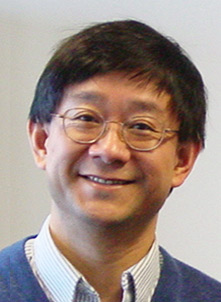
Xi-Cheng Zhang is the Director and M. Parker Givens Chair of Optics at The Institute of Optics, a foremost institution in optics and optical physics research and education at the University of Rochester.
Prior to joining the University of Rochester in 2012, Dr. Zhang pioneered world-leading research in the field of ultrafast laser-based terahertz technology and optical physics at Rensselaer Polytechnic Institute (1992–2012). At RPI, he was the J. Erik Jonsson Professor of Science; Acting Head of the Department of Physics, Applied Physics & Astronomy; and Founding Director of the Center for THz Research. He is co-founder of Zomega Terahertz Corp. With a B.S. (1982) from Peking University, he earned a Ph.D. in Physics (1986) from Brown University.
Dr. Zhang's previous positions have included visiting positions at MIT (1985), the Physical Tech. Division of Amoco Research Center (1985–1986), EE Department at Columbia University (1987–1991), Distinguished Visiting Scientist at the Jet Propulsion Lab, Caltech (2006), Huazhong University of Science and Technology (2010–2014), Lomonosov Moscow State University (since 2012), and Capital Normal University of Beijing (2016).
Dr. Zhang is a Fellow of The Optical Society, SPIE, AAAS, the American Physical Society, and IEEE. His recent honors and awards include being named Australian Academy of Science Selby Fellow (2017) and receiving the IRMMW-THz Kenneth Button Prize (2014), the OSA William F. Meggers Award (2012), the IEEE Photonics Society William Streifer Scientific Achievement Award (2011), and the Rensselaer William H. Wiley 1866 Award (2009).
Alan Willner (2008–2013)
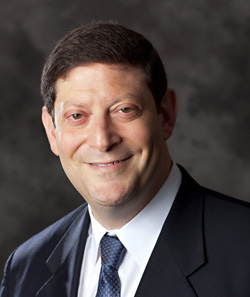
Alan Willner received the B.A. (1982) in Physics from Yeshiva University and the Ph.D. (1988) in Electrical Engineering from Columbia University. He was a Postdoctoral Member of Technical Staff at AT&T Bell Laboratories and a Member of Technical Staff at Bellcore, and he is currently Steven and Kathryn Sample Chair in Engineering at the University of Southern California. He is also a member of the U.S. Army Science Board. Prof. Willner has received the following honors: Member of U.S. National Academy of Engineering, International Fellow of U.K. Royal Academy of Engineering, Presidential Faculty Fellows Award from the White House, IEEE Eric Sumner Award, Guggenheim Foundation Fellowship, Packard Foundation Fellowship, The Institution of Engineering and Technology (IET) JJ Thomson Medal, Fellow of National Academy of Inventors, Fulbright Foundation Senior Scholar Fellowship, OSA Paul Forman Engineering Excellence Award, IEEE Photonics Society Engineering Achievement Award, SPIE President's Award, OSA Robert Hopkins Leadership Award, IEEE Photonics Society Distinguished Lecturer Award, 2014 IEEE Globecom Best Paper Award, NSF Young Investigator Award, 2001 Eddy Paper Award from Pennwell Publications for the Best Contributed Technical Article, and Armstrong Foundation Memorial Award. He is a Fellow of the AAAS, IEEE, IET, OSA, and SPIE. Prof. Willner has been: Co-Chair of U.S. National Academies' Study on Optics and Photonics; President of OSA; President of IEEE Photonics Society; Editor-in-Chief of Optics Letters, IEEE/OSA Journal of Lightwave Technology, and IEEE Journal of Selected Topics in Quantum Electronics; Chair of the IEEE TAB Ethics Committee; General Co-Chair of CLEO; Program Co-Chair of the OSA Annual Meeting; and General Chair of the IEEE Photonics Society Annual Meeting. His research is primarily in optical communications.
Anthony J. Campillo (2002–2007)
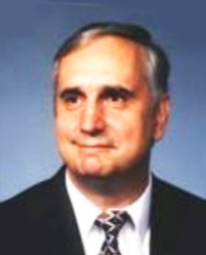
Anthony J. Campillo (Tony) has more than 50 years experience in optics and photonics. His formal training is in Electrical Engineering and includes a BS from New Jersey Institute of Technology (1964), an MS from Princeton University (1966), and a Ph.D. from Cornell University (1973). Dr. Campillo has conducted seminal optics research at GT&E Laboratories (1966-68), Los Alamos Scientific Laboratory (1972-1979), Brookhaven National Laboratory (1979-1981), and the Naval Research Laboratory (1981-2006). While at NRL, he was also the Head of the Optical Physics Branch (1992-2006). A widely published author, his research spans a broad range of subjects, including laser development, nonlinear optics, ultrafast spectroscopy, laser chemical/biological sensing, aerosol optics, photothermal spectroscopy, microcavity effects, photonics, and nanotechnology. He is a Fellow of the American Physical Society and OSA.
Dr. Campillo has been a member and active volunteer of OSA since 1966. He has served as the General Optics Topical Editor for Optics Letters (1993-1998), then as an Associate Editor (1999-2001) and the Editor-in-Chief (2002-2007). He is currently the Chair of the OSA Editorial Ethics Review Panel (2007–present) and has served on the Publications Long Term Planning Group (2003-2015) as well as the Board of Editors (2002–present). When Dr. Campillo retired from a career as a government research scientist in 2007, he eagerly accepted the opportunity to further serve the OSA by joining Headquarters as a staff science advisor. In this position, he played an important role in a number of new initiatives, especially in publications. In 2014, he received the OSA Steven D. Fantone Distinguished Service Award.
Anthony M. Johnson (1996–2001)
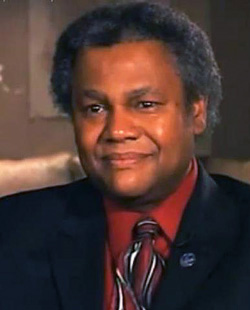
Anthony M. Johnson has been the Director of the Center for Advanced Studies in Photonics Research (CASPR) and Professor of Physics and Computer Science & Electrical Engineering at the University of Maryland Baltimore County (UMBC) since 2003. He received a B.S. in Physics (1975) from Polytechnic Institute of New York and a Ph.D. in Physics (1981) from City College of New York. He was a Distinguished Member of Technical Staff at Bell Labs, where he spent 14 years before joining New Jersey Institute of Technology (1995) as Chairperson and Distinguished Professor of Physics until 2003. His research is in the general area of ultrafast optical phenomena. Dr. Johnson was 2002 President of The Optical Society, Editor-in-Chief of Optics Letters (1995–2001), CLEO 1990 Program Co-Chair, and CLEO 1992 Conference Co-Chair. He was a member of the Board of Directors of the American Physical Society (1994–1997), the IEEE Photonics Society (1993–1995), OSA (1993–1996; 2000–2003), and the American Institute of Physics (2002–2008). Dr. Johnson has also been a member of the DOE Basic Energy Sciences Advisory Committee (BESAC; 1999–2008); a member of the NRC/NAS Committee on AMO2010: Atomic, Molecular and Optical Science (2005–2006); Deputy Director of the NSF Engineering Research Center MIRTHE (Mid-Infrared Technologies for Health and the Environment; 2002–2016); a member of the APS Division of Laser Science (DLS) Executive Committee (2011–2014) and APS Executive Board (2013–2014); a member of the NRC Committee on Atomic, Molecular and Optical Science (CAMOS; 2013–2015); and a Founding Editorial Board Member of Physical Review X (2011–2018). He is a Fellow of the APS, OSA, IEEE, AAAS, and the National Society of Black Physicists. His awards include the 1996 APS Edward Bouchet Award.
Peter W. E. Smith (1990–1995)
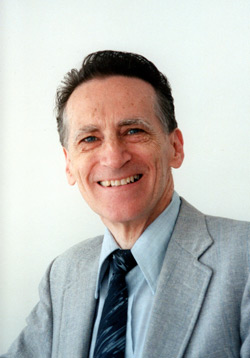
Peter W.E. Smith received his M.Sc. and Ph.D. degrees in Physics from McGill University in 1961 and 1964, before joining the Bell Telephone Laboratories, where he conducted research on laser mode selection and mode-locking, pioneered the development of waveguide gas lasers, and demonstrated and developed hybrid bistable optical devices.
After a visiting lectureship at the University of California, Berkeley in 1970 and being a visiting research scientist at the Laboratoire d'Optique Quantique from 1978–1979, he returned to Bell Communications Research in 1984. In 1992, he joined the University of Toronto as Professor of Electrical and Computer Engineering, serving as Executive Director of the Ontario Laser and Lightwave Research Centre from 1992–1995 and as Director of the Nortel Institute for Telecommunications from 1999 until 2003 when he became Professor Emeritus.
He has been an Associate Editor of Optics Letters, Editor-in-Chief of the Institute of Electrical and Electronics Engineers (IEEE) Press book series "Progress in Lasers and Electro-Optics," and the founder of the OSA/IEEE Photonic Switching Conference. He was the Editor of Optics Letters from 1991–1995 before serving as Chair of OSA's Board of Editors from 1996–1998. He served as the 1984 President of the IEEE Lasers and Electro-Optics Society and was a member of OSA's Board of Directors from 1993–1997.
Dr. Smith is a Life Fellow of the IEEE, a Fellow of The Optical Society and the Institute of Physics (UK), and a member of the Canadian Association of Physicists. He is also the recipient of the 1986 IEEE Quantum Electronics Award and 2000 IEEE Third Millennium Medal. He is currently pursuing research interests in photonics involving fiber Bragg grating devices, ultrafast optical switching, and nonlinear optical properties of nanocrystals.
Paul L. Kelley (1984–1989)
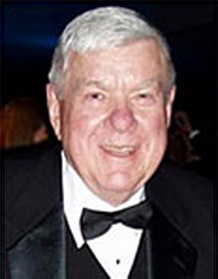
Dr. Paul L. Kelley is a retired Professor of Electrical Engineering at Tufts University, where he served as the Director of the Electro-Optics Technology Center. He began his career by earning a bachelor's degree from Rutgers University (1956), a master's degree from Cornell University (1959), and a doctorate from the Massachusetts Institute of Technology (1962). He spent many years as a staff member at MIT Lincoln Laboratory, including as the Associate Leader of the Quantum Electronics Group. Dr. Kelley's interests include nonlinear optics, tunable lasers, laser spectroscopy, laser remote sensing, and optical communications. He is a Fellow of both The Optical Society and the American Physical Society. In addition to serving as Editor-in-Chief of Optics Letters, his leadership at The Optical Society has included terms as Chair of the Board of Editors and the Publications Council. In 1998, he received the Distinguished Service Award of The Optical Society, and more recently he served as the Chair of OSA's History Book Committee, which oversaw the "Century of Optics" book for the Society's 100th Anniversary in 2016.
Robert W. Terhune (served 1977–1983; also JOSA B 1984–1987)
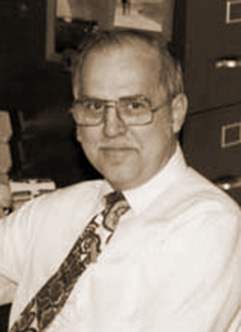
Robert W. Terhune was born in 1926 in Detroit, Michigan. He received his B.S degree in 1947 and his Ph.D. in 1957 from the University of Michigan and continued basic and applied research at the Ford Research Laboratory in Dearborn, where he stayed until retirement in 1988. Through his work, he was able to demonstrate that ruby made an excellent MASER (microwave laser), and as a result, by 1960, many laboratories were experimenting with ruby masers. Hughes Laboratories was one of them, and Ted Maiman used a ruby maser crystal to demonstrate the first ruby laser.
Terhune was an OSA Fellow and recipient of the Frederic Ives Medal in 1992. He was the founding Editor-in-Chief of both OSA's Optics Letters and JOSA B and served on the OSA Board of Directors from 1980-1986. During his career, Robert also served on OSA's Board of Editors, Adolph Lomb Medal Committee, Joint Council on Quantum Electronics, Charles Townes Award Committee, Nominating Committee, and Publications Council. In 1967, he was recipient of the University of Michigan Sesquicentennial Award given to the top 150 graduates in University of Michigan's 150-year history. Terhune died in 2014.
